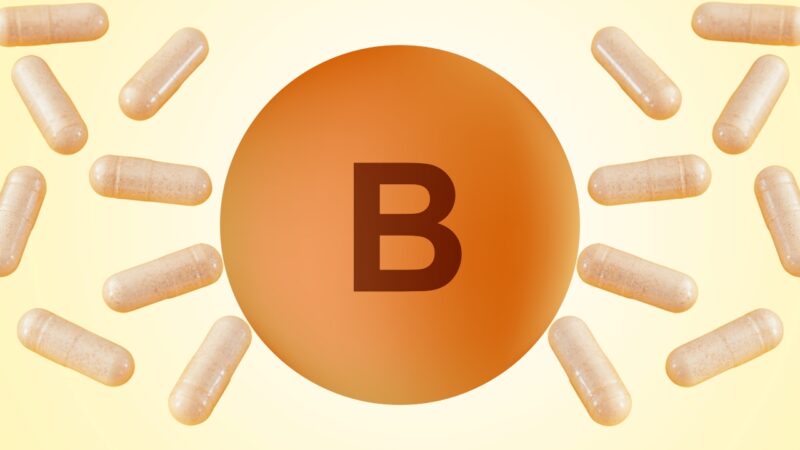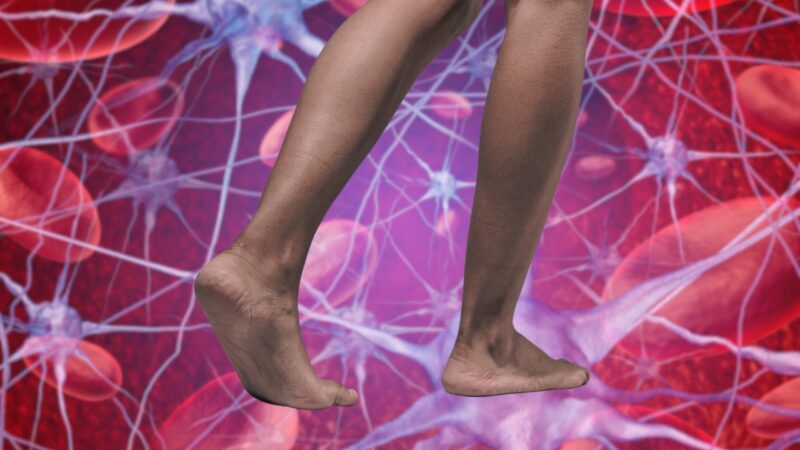Proper blood circulation is vital for our overall health, ensuring that oxygen reaches every part of our body. Poor circulation can lead to serious health issues, making it essential to maintain good blood flow.
One common area where circulation problems occur is in the legs, especially with many of us spending long hours sitting at work. This sedentary lifestyle makes it challenging to stay active and keep our blood flowing efficiently.
To support healthy circulation, it’s crucial to ensure your body gets the right vitamins. Below, we’ve put together a list of six essential vitamins that can help improve blood flow and overall blood health.
1. Vitamin E

Vitamin E is well-known for enhancing skin elasticity and appearance, along with offering numerous other health benefits.
One of its key roles is improving blood flow and circulation by preventing blood cells and platelets from sticking together. This reduces the risk of clots or blockages, promoting healthier veins and lowering the chances of heart damage or stroke.
While most diets provide sufficient Vitamin E, individuals with digestive disorders may experience a deficiency.
For these individuals, IV supplementation is the most effective way to correct this deficiency, as oral supplements may not adequately deliver the necessary nutrients.
2. Vitamin B Complex

Vitamin B Complex is crucial for enhancing blood circulation, particularly in the legs. Several B vitamins, including B1, B3, B6, and B12, play key roles in maintaining cardiovascular health.
- Vitamin B1 (Thiamine) Thiamine supports heart function and blood vessel integrity, ensuring smooth blood transport. Deficiency can weaken heart muscles and impair circulation. Foods like whole grains, legumes, and nuts are good sources of thiamine.
- Vitamin B3 (Niacin) Niacin widens blood vessels, improving blood flow and reducing bad cholesterol, which helps prevent arterial blockages. It may also reduce the risk of peripheral artery disease. Chicken, turkey, and brown rice are rich in niacin, and supplements may be considered under medical supervision.
- Vitamin B6 (Pyridoxine) Pyridoxine aids in hemoglobin production, enhancing oxygen delivery to muscles and circulation. It also helps break down homocysteine, preventing blood vessel clogging. Fish, potatoes, and bananas are high in B6.
- Vitamin B12 (Cobalamin) Cobalamin is essential for red blood cell production, preventing anemia and improving blood flow. It also supports nerve health, reducing the risk of neuropathy affecting leg circulation. Meat, dairy products, and fortified cereals are good sources of B12. Regular intake of B12-rich foods or supplements is beneficial for circulation issues.
3. Vitamin C

Vitamin C is vital for improving blood circulation, especially in the legs. Its antioxidant properties and role in collagen synthesis significantly contribute to vascular health and circulatory efficiency.
Antioxidant Properties
NCBI says that Vitamin C has powerful antioxidant properties, neutralizing free radicals and preventing oxidative stress, which can damage blood vessels. Healthy blood vessels are essential for optimal blood flow, reducing the risk of circulatory problems.
Additionally, Vitamin C supports the production of nitric oxide, a molecule that relaxes blood vessels, allowing for smoother blood flow.
This is particularly beneficial for those with circulatory issues in the legs.
Vitamin C can be incorporated into the diet through citrus fruits, berries, and green leafy vegetables, with supplements available for those needing additional intake.
Collagen Synthesis
Vitamin C is essential for collagen synthesis, which provides structure to blood vessels, ensuring they remain strong and flexible as stated by Nicholas N. DePhillipo.
This structural integrity is crucial for maintaining good blood circulation, especially in the legs where blood must travel against gravity.
Adequate collagen levels prevent the weakening and stiffening of vessels, reducing the risk of conditions like chronic venous insufficiency. Foods rich in Vitamin C, such as oranges, strawberries, and bell peppers, support collagen production.
4. Vitamin K

Vitamin K, also known as potassium, is a vital nutrient found in many brightly colored fruits, most notably bananas.
Potassium is well-known for promoting healthy muscles and preventing muscle cramps and irritation as per Harvard nutrition source.
Potassium helps strengthen arteries and veins, preventing bulging and ensuring smoother blood flow. It also aids in repairing vascular damage according to Wexner.
Potassium is readily available in many supplements, like Alpha Palm, due to its numerous health benefits.
5. Vitamin D

Vitamin D supports endothelial function and enhances calcium absorption, both crucial for blood circulation in the legs.
Influence on Endothelial Function
Vitamin D impacts endothelial cells, which line blood vessels and control blood flow. A deficiency can lead to endothelial dysfunction, increasing cardiovascular risk
Adequate vitamin D levels reduce inflammation and improve nitric oxide availability, essential for blood vessel dilation and proper blood flow in the legs.
Maintaining optimal vitamin D through sun exposure, diet, or supplements can help prevent circulatory problems.
Calcium Absorption
Vitamin D enhances calcium absorption, crucial for bone health and muscle function.
Calcium is necessary for muscle contraction, which supports blood circulation. Without sufficient calcium, muscles can’t contract efficiently, leading to poor blood flow in the extremities.
By ensuring proper calcium absorption, vitamin D helps maintain strong bones and efficient muscle function, promoting healthy blood circulation in the legs.
Including vitamin D-rich foods like fatty fish, fortified dairy products, and egg yolks in your diet can help. Supplements are also available for those who struggle to maintain adequate vitamin D levels through diet alone.
6. Omega-3 Fatty Acids
Omega-3 fatty acids lower triglyceride levels, which are a risk factor for heart disease and poor circulation.
Found in fatty fish like salmon and mackerel, omega-3s reduce the liver’s production of triglycerides. Regular consumption of omega-3-rich foods can lower triglyceride levels by up to 30% as per J. Chris Bradberry.
Fish oil supplements are an alternative for those who do not consume enough fish.
Plant-based sources like flaxseeds and chia seeds also provide omega-3s, though they are converted less efficiently than fish sources. Those on a plant-based diet may need higher intakes of flaxseeds or supplements to achieve similar effects.
Improvement of Blood Flow
Omega-3 fatty acids enhance blood flow by promoting the release of nitric oxide, which relaxes and dilates blood vessels. Improved vasodilation leads to better circulation, especially beneficial for leg health. These fatty acids also reduce inflammation, which can impair blood flow and lead to conditions like atherosclerosis.
Regular consumption of omega-3-rich foods can alleviate chronic inflammation and improve arterial compliance.
Clinical trials suggest significant benefits for those with circulation issues, including peripheral artery disease. Incorporating foods like walnuts, salmon, and mackerel into the diet or taking a daily fish oil supplement can make a noticeable difference.









